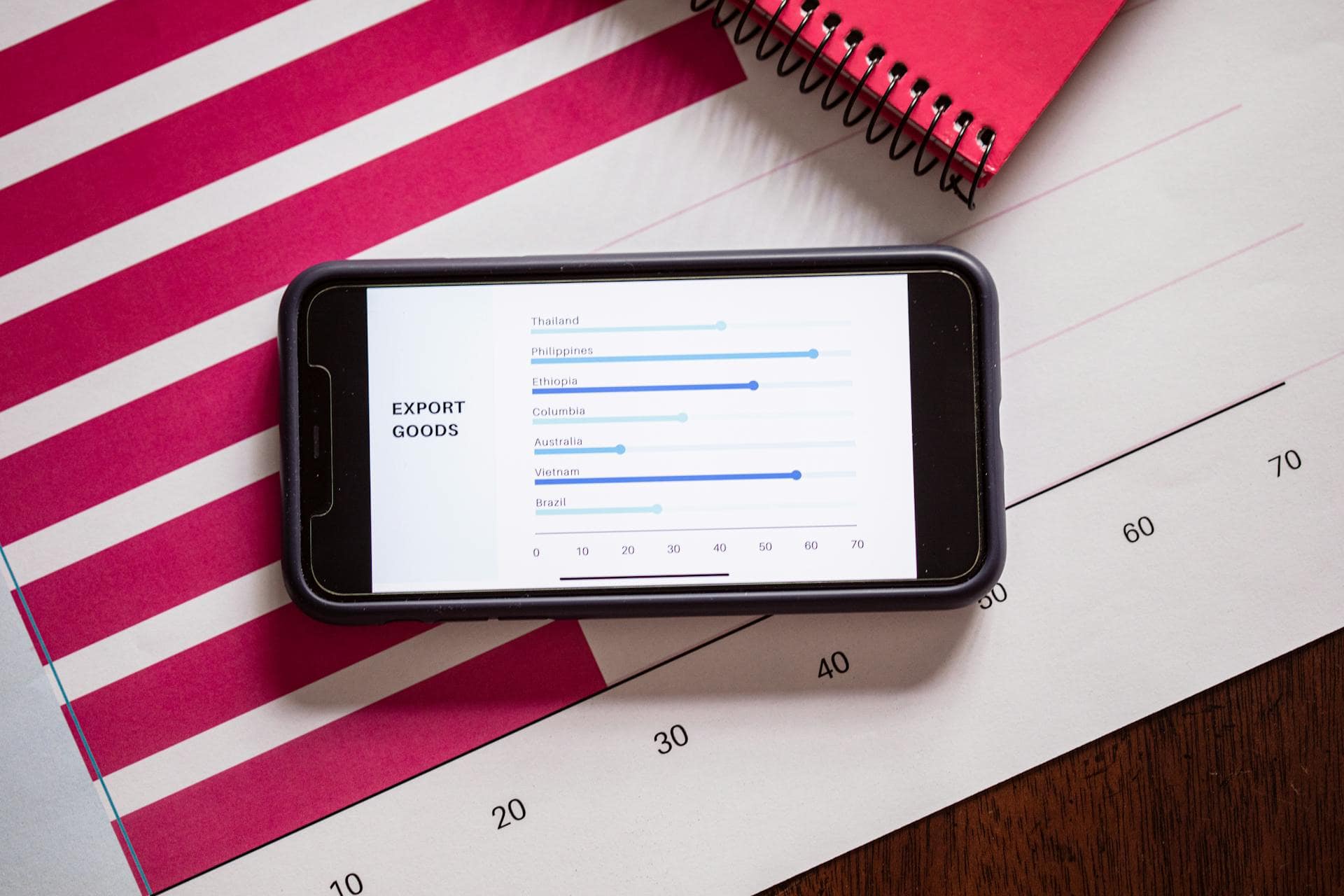While global trade organizations continually collaborate to promote international uniformity in product classification, there are several different classification systems in place that traders must recognize to ensure compliance.
Beyond globally accepted classifications, each country has the latitude to tack on additional specifications for products moving across their borders.
Let’s look at the types of product classifications, the importance of compliance, and tips for how traders can use these classification systems properly.
Types of Product Classifications for Export
A company needs to do classification if they are planning to export any product. How are commodities classified for export? Before we zoom in on export classifications, let’s highlight notable multilateral export control regimes.
Four Multilateral Export Control Regimes
Some countries have chosen to create and join voluntary agreements regulating arms trade. These regimes aim to limit the creation and movement of weapons of mass destruction (WMD) and mitigate terrorism.
The four multilateral export control regimes are:
- the Australia Group (AG)
- the Nuclear Suppliers Group (NSG)
- the Wassenaar Arrangement (WA)
- the Missile Technology Control Regime (MTCR)
Each regime has its own participants and terms. Take the Wassenaar Arrangement (WA), for example. “The WA is a voluntary system that calls on member states to agree on a list of items that should be subject to export controls. For items on the list, each country is obliged to control exports via national law. Twice a year, member countries are called on to report on transfers of certain regulated dual-use items and share information on potential transfers with other Wassenaar member countries. The Wassenaar General Assembly also meets annually in December in Vienna to review the Wassenaar Regulation List, exchange information, and adopt new regulations to strengthen export control enforcement,” explains the Center for Strategic and International Studies.
In addition to these regimes, export classification requirements change from country to country. Here’s a closer look at the main product classification systems in place, along with classification tools for global traders:
EAR/ITAR or DL/ML Product Classification
EAR/ITAR or DL/ML product classification is mainly adapted by countries following the Wassenaar Arrangement. These types of export classifications are used by over 60 countries, including the United States, European Union nations, Australia, Singapore, Canada, and Japan. These nations typically have more developed internal global trade regulations in place.
EAR/ITAR is US terminology. EAR stands for Export Administration Regulations, while ITAR is International Traffic in Arms Regulations. Both aim to promote security by regulating access to controlled goods, from technology to weaponry.
Export Administration Regulations (EAR)
EAR classification is regulated by the US Department of Commerce (BIS) and used for the bulk of exported products, including electronics, chemicals, aerospace technologies, and more.
According to the US Department of Commerce, “The Export Administration Regulations (EAR) is a set of United States government regulations on the export and import of most commercial items. The U.S. Department of Commerce is responsible for implementing and enforcing EAR. Many of these items are ‘dual-use’ items, meaning that they have both commercial and military functions.”
How can you determine if a product falls under the EAR classification? Use the Commerce Control List (CCL) to look up the product you plan to export, see which category your product falls into, and then discover applicable license and reporting requirements.
International Traffic in Arms Regulations (ITAR)
ITAR classification is regulated by the U.S. Department of State (DDTC) and used for military items, including defense technology, weaponry, and more.
The US Department of Commerce explains the function of ITAR, saying, “The International Traffic in Arms Regulations (ITAR) is a set of United States Government regulations on the export and import of defense-related articles and services. In a global marketplace, many U.S. prime contractors are requiring their suppliers to be ‘ITAR compliant.’ In order to be ITAR compliant, you must register with the Directorate of Defense Trade Controls (DDTC).”
To determine if a product falls under DDTC jurisdiction, an exporter must consult the United States Munitions List (USML).
Beyond the US, the other nations mentioned above use DL / ML export classification.
Harmonized System (HS) Classification (Tariff Classification)
The Harmonized System is a globally recognized classification system and is mainly used by countries that are not members of the Wassenaar Arrangement. This system is often used by many developing nations without their own classification regulations in place. About 120 countries worldwide use this HS classification.
HS classification is a standardized numerical system that breaks down all trade goods into categories, assigning each type of product a six-digit code. All goods must have a properly classified HS code before being exported.
The World Customs Organization (WCO) updates the Harmonized System every five years to account for changes in the marketplace, such as introducing new products that may not fit into its preexisting classifications. The most recent update of the HS System from the WCO went into effect on January 1, 2022.
The HS system is divided into 21 sections with 97 chapters. For example, Section II provides codes for vegetable products and contains chapters 06 through 14, which break down the codes for each type of vegetable product. Chapter 09 provides codes for coffee, tea, maté, and spices. A company exporting roasted, caffeinated coffee would use the code 0901.21. What do the numbers in this six-digit code represent? Let’s zoom in on the structure of an HS code.
What do the HS Code Numbers Mean?
The first two numbers signify the chapter classification. In the case of the coffee mentioned above, chapter nine. The next two digits point to the heading number within that chapter. The final two digits of the HS code point to the specific subheading, further specifying the nature of the product.
Thankfully, the first six numbers of an HS code are typically the same in most countries. However, each country can affix additional digits to the end of an HS code for more in-depth classification. For example, the United States uses what’s known as Schedule B classification.
Schedule B Classification
Irrespective of the export classification system followed by the country, every country uses HS Classification as an added export classification to assess trade statistics. In the case of the US, export HS used for trade statistics is known as Schedule B Classification.
The Schedule B classification system is rooted in the Harmonized System, using the six-digit HS code as a base and then adding four additional numbers for further specification. These extra digits are specific to the US. However, other countries are free to establish their own classifications in addition to the HS codes.
The format of a Schedule B classification looks like: XXXX.XX.XXXX, with the first six numbers being the HS code and the final four digits being the U.S.-specific code.
Traders in the U.S. will need the Schedule B code to use the Electronic Export Information (EEI) filing system and check for U.S. Export Administration Regulations.
The United States Census Bureau allows traders to search for specific products or browse the Schedule B catalog to find the correct classification code.
To export a product, the exporting company must know both. Remember, the first six digits will likely be the same since most countries use the Harmonized System. However, the last four digits vary by country.
Schedule B classification is the statistical classification system used by the US. Statistical classifications come in the form of data or figures that let the country of origin and destination know what quantity of a particular good has been imported or exported from the country. These classifications vary by country and are more for the record-keeping purposes of the nations involved in trade and less about customs, tariffs, licensing, or other necessary aspects of the import/export process.
For more information, please watch this video on the Harmonized System by the International Trade Administration.
Why Proper Export Product Classification is Important
Correctly classifying goods for export is a cornerstone of global trade. It’s impossible to legally export goods without taking time to ensure each product is classified correctly. Moreover, if a company exports incorrectly classified goods, they are susceptible to heavy fines, revocation of export licensing, and even imprisonment.
Export classification helps traders determine which goods are allowed to be exported, what licenses they need, and which other regulations apply to the intended transaction. Properly classifying each product paves the way for compliance.
Accurate product classification allows global traders to answer the following questions:
- Am I authorized to export this product from Country A to Country B?
- If I am authorized, which licenses should I have, and what exemptions can I use?
- What do I need to do to comply with all applicable export regulations?
Failure to comply with export classification laws is a serious offense, especially when exporting defense technology and other heavily controlled products.
What are the consequences of non-compliance with export laws? Here are three main risks of an export violation:
- You can be fined millions, even billions of dollars
- You can be barred from future export transactions
- You can be imprisoned
Export violation repercussions vary from nation to nation. In the US, “Violations of the Export Administration Regulations, 15 C.F.R. Parts 730-774 (EAR) may be subject to both criminal and administrative penalties,” explains the United States Bureau of Industry and Security. “Under the Export Control Reform Act of 2018 (50 U.S.C. §§ 4801-4852) (ECRA), criminal penalties can include up to 20 years of imprisonment and up to $1 million in fines per violation, or both. Administrative monetary penalties can reach up to $300,000 per violation or twice the value of the transaction, whichever is greater.”
Beyond avoiding legal and financial issues, companies can benefit from proper product classification since it will allow them to manage resources, keep accurate records, and continue global trade operations.
Export Product Classification Software
Whether your company is just getting started with global trading or you have several warehouses full of different export products to juggle, OCR Services, Inc. has the tools you need to facilitate global trade management.
Take control of export product classification with our product classification software. Our software allows you to cut down non-compliance risks, automate classification processes, facilitate audit requests, and keep everyone up-to-date on relevant regulation revisions.
Contact us at OCR Global Trade Management for more information on how these powerful tools can help your company stay compliant, efficient, and profitable.
Reference Links:
- https://www.csis.org/analysis/toward-new-multilateral-export-control-regime
- https://www.armscontrol.org/factsheets/wassenaar
- https://www.bis.doc.gov/index.php/documents/technology-evaluation/781-export-licensing/file
- https://www.bis.doc.gov/index.php/regulations/commerce-control-list-ccl
- https://www.bis.doc.gov/index.php/documents/technology-evaluation/781-export-licensing/file
- https://www.ecfr.gov/current/title-22/chapter-I/subchapter-M/part-121
- https://www.wcotradetools.org/en/harmonized-system
- https://www.trade.gov/electronic-export-information-eei
- https://www.bis.doc.gov/index.php/regulations/export-administration-regulations-ear
- https://uscensus.prod.3ceonline.com/
- https://www.census.gov/foreign-trade/schedules/b/2022/index.html
- https://www.youtube.com/watch?v=KcwBtVNamwM
- https://www.bis.doc.gov/index.php/enforcement/oee/penalties#:~:text=Under%20the%20Export%20Control%20Reform,fines%20per%20violation%2C%20or%20both.
- https://www.ocr-inc.com/productclassification/
- https://www.ocr-inc.com/contact-us/



